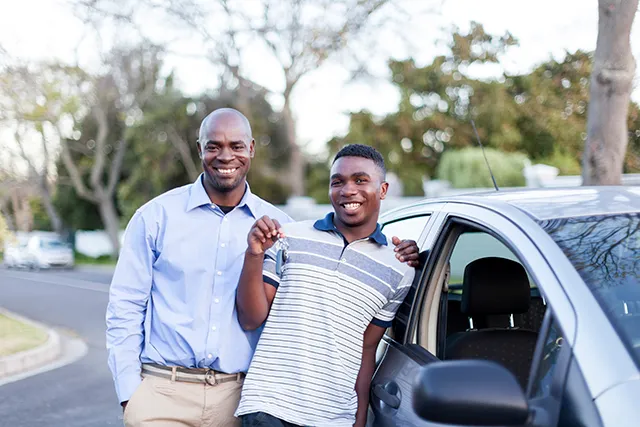In the realm of teenagers, the allure of the open road and the thrill of cruising in a car is an irresistible force. Yet, for parents, this rite of passage can spark a whirlwind of emotions, ranging from trepidation to cautious optimism. As your beloved offspring inch closer to legal driving age, it’s imperative to navigate the complexities of this pivotal juncture with wisdom, empathy, and a healthy dose of preparation. This comprehensive guide will equip you with the knowledge and tools necessary to steer your teenagers safely through the uncharted territories of teenage driving.
Navigating the Road of Teen Driving: A Comprehensive guide for Parents
Teens & Cars: What Parents Need to Know
Teens gaining the freedom to drive can be both an exciting and nerve-wracking time for parents. Here are some key aspects to consider:
- enforce Driving Rules and Boundaries: Create clear rules and consequences for driving, including speed limits, curfews, and limits on passengers.
- Model Good Driving Habits: Lead by example by demonstrating responsible driving practices yourself.
- Set Realistic Expectations: Understand that teens are still developing and may make mistakes. Balance support with holding them accountable.
- Encourage Defensive Driving: Teach teens defensive driving techniques,including anticipating hazards,maintaining safe following distances,and avoiding distractions.
- Monitor and supervise: In the early stages,consider using a form of GPS tracking or having a parent present during certain drives.
- Foster Open Communication: Create an environment were teens feel pleasant discussing driving concerns, mistakes, and potential hazards.
- Address Peer Pressure: Discuss the dangers of driving under the influence of peers or in unsafe situations.
Unveiling the Hidden Risks: Delving into the Unique Hazards Faced by Teen Drivers
Beneath the surface of youthful exuberance and the newfound freedom of the open road, lies a somber reality for teen drivers: a heightened susceptibility to unique hazards. Compared to their more experienced counterparts, teens are at an elevated risk of engaging in risky behaviors, such as:
- Speeding: The thrill of breaking limits often overrides the consequences, leading to a disproportionate number of speed-related accidents among teens.
- Distracted Driving: The allure of electronic devices, social media, and even passengers can divert attention from the road, resulting in tragic distractions.
- Inexperience: The lack of driving experience and unfamiliarity with road conditions make teens more prone to errors, misjudgments, and panic reactions in critical situations.
- Peer Influence: The presence of friends in the vehicle can create a sense of invincibility and encourage risk-taking, ultimately increasing the likelihood of crashes.
Recognizing these hidden dangers is the first step towards safeguarding our young drivers. Comprehensive education, supervised driving experiences, and open communication about road safety are essential strategies to mitigate these risks and protect their precious lives on the road.
Fostering Safety and Responsibility: establishing Effective Rules and Limits for Teen Drivers
Creating clear rules and limitations for teen drivers fosters a culture of safety and responsibility. Establish a driving contract that outlines expectations such as designated destinations, time restrictions, and adherence to traffic laws. encourage teens to attend driver safety education courses and practice defensive driving techniques. Restrict the number of passengers or limit driving at night until they have gained more experience. Additionally, encourage open communication and discuss the potential consequences of breaking rules to instill accountability and encourage responsible behavior.
Beyond the Steering Wheel: Exploring the Social, Emotional, and Cognitive Factors Shap ing Teen Driving Behavior
Beyond the Mechanical: Understanding the Human Element
Teens are not simply behind the wheel; they are navigating a complex interplay of social, emotional, and cognitive factors. Social influences, such as peer pressure and the desire for independence, can impact their decision-making. Emotional factors like stress, anxiety, and excitement can alter their perception of risk. Cognitive advancement, including judgment, attention, and response time, is still under construction in teens. recognizing these factors is crucial for parents when discussing safe driving practices,fostering open communication,and setting clear expectations that go beyond the mechanical aspects of driving.
Concluding Remarks
As your teens embark on the road to driving, remember that open communication and responsible guidance are essential for their safety.By fostering a positive and supportive environment, you can empower them to make smart choices and navigate the challenges of teen driving with confidence.
